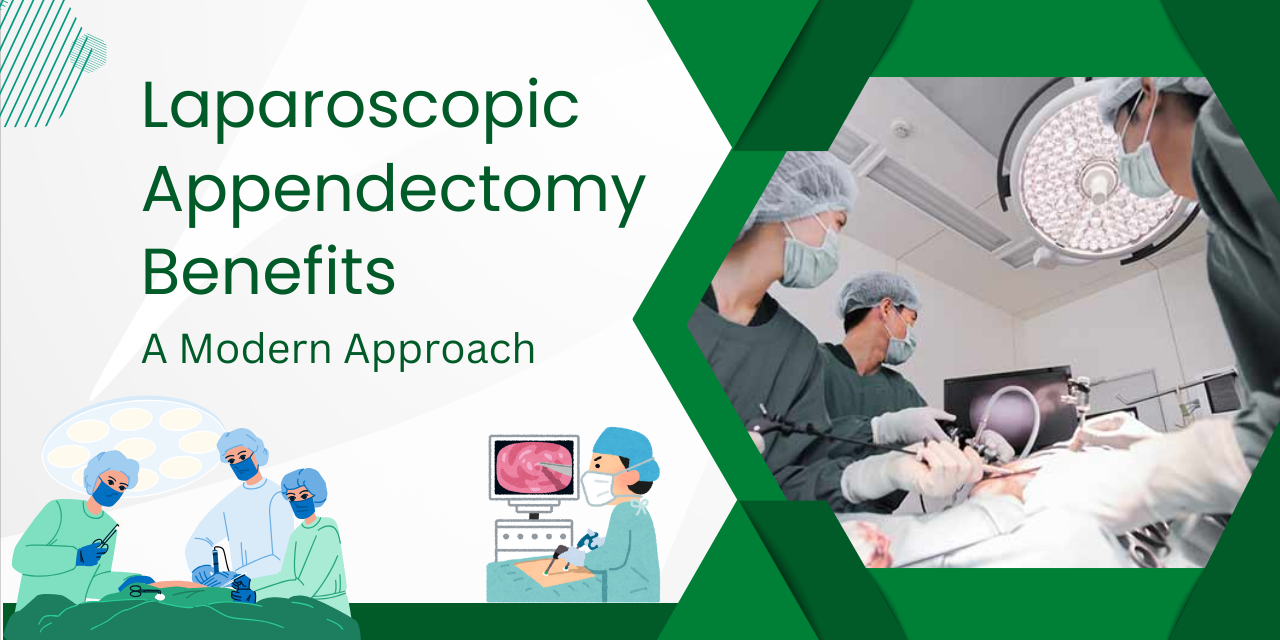When it comes to appendicectomy, or the removal of the appendix, advancements in surgical techniques have revolutionized patient care. One such advancement is laparoscopic appendicectomy, a modern approach that offers numerous benefits over traditional open surgery. This article explores the advantages of laparoscopic appendicectomy and why it has become the preferred method for appendix removal.
What is Laparoscopic Appendicectomy?
Laparoscopic appendicectomy, also known as minimally invasive appendectomy, is a surgical technique used to remove the appendix through small incisions in the abdomen. Unlike traditional open surgery, which requires a larger incision, laparoscopic surgery involves making several tiny cuts through which a laparoscope—a thin, flexible tube with a camera and light—is inserted. The surgeon then uses specialized instruments to perform the surgery with enhanced precision.
Benefits of Laparoscopic Appendicectomy
➽ Reduced Postoperative Pain
One of the primary benefits of laparoscopic appendicectomy is the significant reduction in postoperative pain. The smaller incisions used in laparoscopic surgery cause less trauma to the surrounding tissues, leading to a more comfortable recovery process. Patients often report less discomfort compared to traditional open surgery, which can make a substantial difference in their overall experience.
➽ Shorter Recovery Time
Laparoscopic appendicectomy typically results in a quicker recovery time. Because the incisions are smaller and the procedure is less invasive, patients generally experience a faster return to their daily activities. Many individuals can resume their normal routines within a few days to a week, compared to the several weeks required after open surgery.
➽ Minimal Scarring
Another significant advantage of laparoscopic appendicectomy is minimal scarring. The small incisions used in this procedure often heal with less visible scars than the larger incision required in open surgery. For many patients, this cosmetic benefit is an important consideration, contributing to a more aesthetically pleasing outcome.
➽ Lower Risk of Infection
The smaller incisions involved in laparoscopic appendicectomy reduce the risk of postoperative infections. With fewer and smaller wounds, there is less chance for bacteria to enter the body, which decreases the likelihood of complications related to infections. This lower risk can contribute to a smoother recovery and fewer postoperative issues.
➽ Shorter Hospital Stay
Patients undergoing laparoscopic appendicectomy often experience a shorter hospital stay compared to those who have open surgery. The minimally invasive nature of the procedure allows for quicker discharge, which can be beneficial for both patients and healthcare systems. A shorter hospital stay also reduces the overall cost of the surgery.
➽ Enhanced Precision and Visualization
The use of a laparoscope provides the surgeon with a high-definition view of the abdominal cavity, allowing for greater precision during the operation. This enhanced visualization helps the surgeon navigate the complex anatomy of the abdomen more effectively, leading to improved outcomes and reduced risk of complications.
Conclusion
Laparoscopic appendicectomy represents a significant advancement in surgical techniques for appendix removal. The benefits of this modern approach—including reduced postoperative pain, shorter recovery time, minimal scarring, lower risk of infection, shorter hospital stay, and enhanced precision—make it a preferred choice for many patients and surgeons. Dr. Sunil Malhotra at Malhotra Hospital & Orthopedic Centre Advanced Surgical Centre is renowned for his expertise in laparoscopic treatment in Panchkula, ensuring patients receive the highest standard of care. As medical technology continues to evolve, laparoscopic appendicectomy exemplifies the progress towards safer, more efficient, and patient-centered care. For more information or to schedule an appointment, please contact us at +917302217302.

